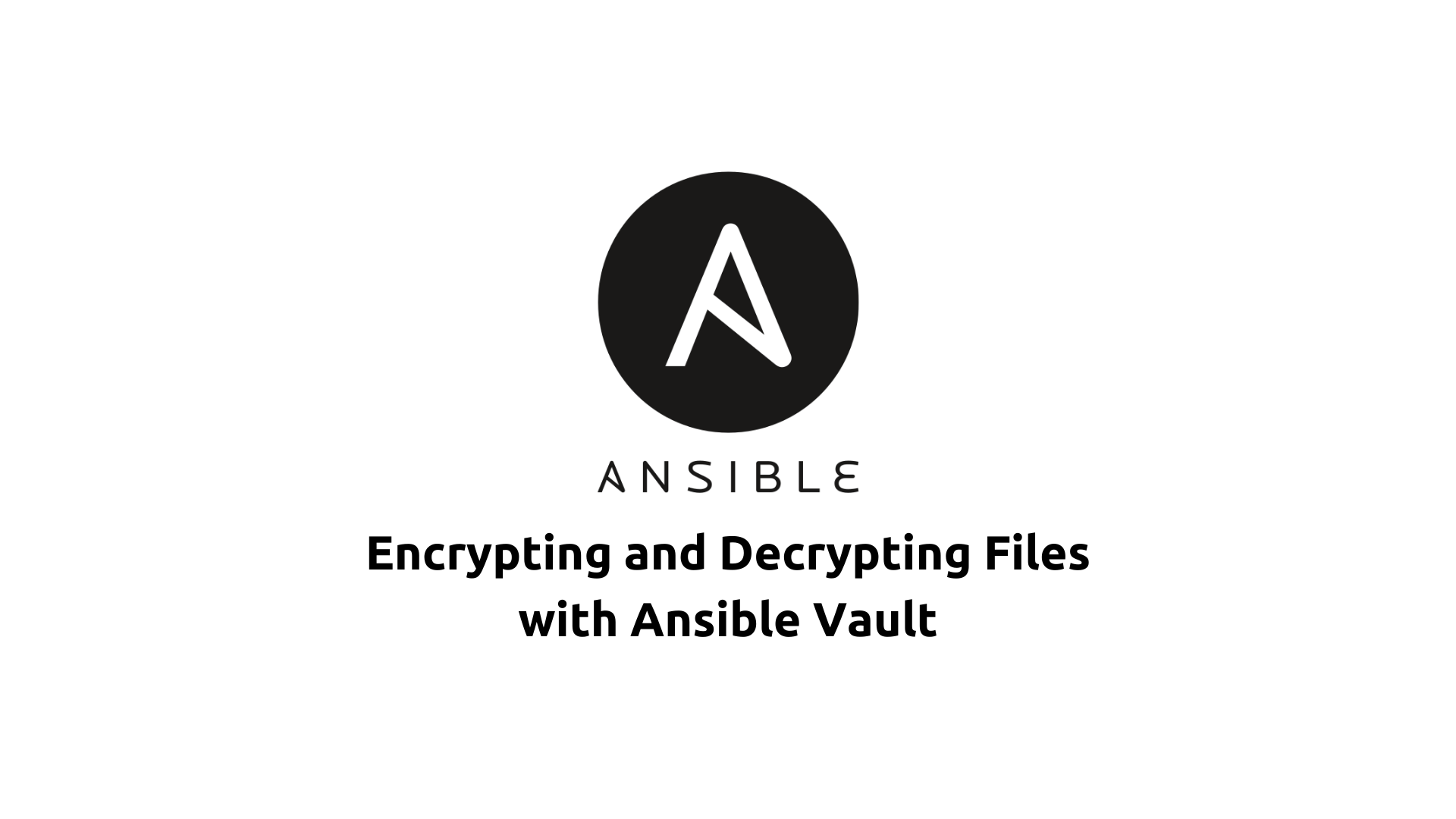Encrypting and Decrypting Files with Ansible Vault
 Saurabh Adhau
Saurabh Adhau
Introduction
Encrypting and decrypting files with Ansible Vault is a crucial aspect of securing sensitive data in Ansible automation workflows. Ansible Vault provides a seamless way to encrypt files containing sensitive information, ensuring that they remain secure and inaccessible to unauthorized users. In this article, we'll explore the process of encrypting and decrypting files with Ansible Vault, along with best practices for managing encrypted files.
Encrypting Files with Ansible Vault
To encrypt a file with Ansible Vault, you can use the ansible-vault encrypt command followed by the path to the file you want to encrypt. Ansible Vault will prompt you to enter a password, which will be used to encrypt the file.
Example:
ansible-vault encrypt secret.yml
After running this command, the secret.yml file will be encrypted, and its contents will be inaccessible without the decryption key.
Decrypting Files with Ansible Vault
To decrypt an encrypted file with Ansible Vault, you can use the ansible-vault decrypt command followed by the path to the encrypted file. Ansible Vault will prompt you to enter the password used to encrypt the file.
Example:
ansible-vault decrypt secret.yml
After running this command, the secret.yml file will be decrypted, and its contents will be accessible in plain text.
Best Practices for Managing Encrypted Files
Password Management: Use strong, unique passwords for encrypting files with Ansible Vault, and store them securely in a password manager or vault.
Access Control: Limit access to encrypted files to authorized users who need to view or modify sensitive information.
Version Control: Store encrypted files in version control systems such as Git, ensuring that changes are tracked and auditable.
Backup and Recovery: Regularly back up encrypted files and store backup copies in secure locations to prevent data loss.
Conclusion
Encrypting and decrypting files with Ansible Vault is essential for securing sensitive data in Ansible automation workflows. By following best practices for managing encrypted files, organizations can ensure that sensitive information remains secure and inaccessible to unauthorized users, enhancing the overall security of Ansible automation.
Subscribe to my newsletter
Read articles from Saurabh Adhau directly inside your inbox. Subscribe to the newsletter, and don't miss out.
Written by

Saurabh Adhau
Saurabh Adhau
As a DevOps Engineer, I thrive in the cloud and command a vast arsenal of tools and technologies: ☁️ AWS and Azure Cloud: Where the sky is the limit, I ensure applications soar. 🔨 DevOps Toolbelt: Git, GitHub, GitLab – I master them all for smooth development workflows. 🧱 Infrastructure as Code: Terraform and Ansible sculpt infrastructure like a masterpiece. 🐳 Containerization: With Docker, I package applications for effortless deployment. 🚀 Orchestration: Kubernetes conducts my application symphonies. 🌐 Web Servers: Nginx and Apache, my trusted gatekeepers of the web.